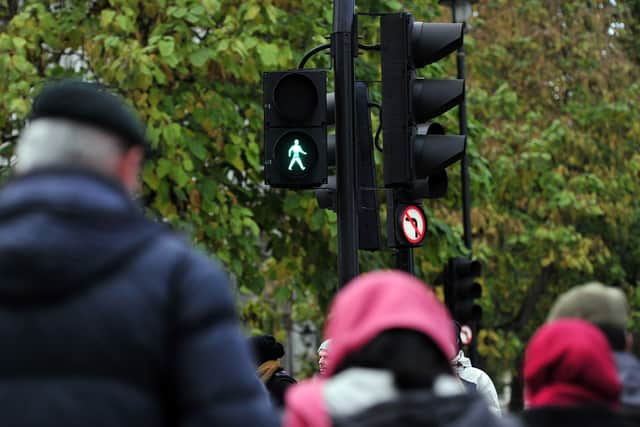Green man at UK pedestrian crossings set to show for longer - as overweight Brits are ‘slower walkers’ in 2023
This article contains affiliate links. We may earn a small commission on items purchased through this article, but that does not affect our editorial judgement.
and live on Freeview channel 276
Pedestrian crossings in the UK are set for a major change - because Brits have become too unfit to cross the road. The overhaul will see the iconic ‘green man’ light up for at least an extra second after studies revealed overweight Brits need more time to make it from one side of the road to the other.
Under the new guidelines, published by the Department for Transport, people will have 20 per cent extra time to cross the road. It is hoped the changes will prevent accidents happening at junctions across the UK.
Advertisement
Hide AdAdvertisement
Hide AdWalkers currently have 6.1 seconds to cross both lanes of a road, at an average speed of 1.2 metres a second. But the new measures will see this increase to 7.3 seconds – an average speed of 1m per second.
Brian Deegan, Active Travel England chief, said: “A lot of infrastructure is aimed at the average person, but the number of people excluded by that is growing, so we have to tackle it. If we don’t give people enough time, they are going to feel they can’t cross the road and that will leave some people feeling that they can’t leave their own house if they don’t have a car.
“We are going to have to meet people where they are. That means local authorities might need to think about extending crossing times.”
It comes after a 2013 study by University College London revealed 76 per cent of men and 85 per cent of women over 65 failed to cross roads before the green light switched off. The average speed of participants in a survey was 0.9m per second for older men and 0.8m per second for older women, which is below the currently required 1.2m-a-second pace.
Advertisement
Hide AdAdvertisement
Hide Ad

In 2021 to 2022, 63.8 per cent of adults aged 18 years and over in England were estimated to be overweight or living with obesity. This was an increase from 2020 to 2021 (63.3 per cent).
Obesity is usually defined as having a body mass index (BMI) of 30 or above. BMI between 25 and 30 is classified as “overweight”.
